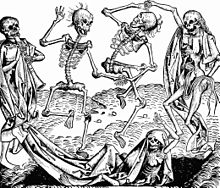
1626 (MDCXXVI) was a common year starting on Thursday of the Gregorian calendar and a common year starting on Sunday of the Julian calendar, the 1626th year of the Common Era (CE) and Anno Domini (AD) designations, the 626th year of the 2nd millennium, the 26th year of the 17th century, and the 7th year of the 1620s decade. As of the start of 1626, the Gregorian calendar was 10 days ahead of the Julian calendar, which remained in localized use until 1923.

1648 (MDCXLVIII) was a leap year starting on Wednesday of the Gregorian calendar and a leap year starting on Saturday of the Julian calendar, the 1648th year of the Common Era (CE) and Anno Domini (AD) designations, the 648th year of the 2nd millennium, the 48th year of the 17th century, and the 9th year of the 1640s decade. As of the start of 1648, the Gregorian calendar was 10 days ahead of the Julian calendar, which remained in localized use until 1923.
The 1540s decade ran from 1 January 1540, to 31 December 1549.
The 1630s was a decade that began on January 1, 1630, and ended on December 31, 1639.

1636 (MDCXXXVI) was a leap year starting on Tuesday of the Gregorian calendar and a leap year starting on Friday of the Julian calendar, the 1636th year of the Common Era (CE) and Anno Domini (AD) designations, the 636th year of the 2nd millennium, the 36th year of the 17th century, and the 7th year of the 1630s decade. As of the start of 1636, the Gregorian calendar was 10 days ahead of the Julian calendar, which remained in localized use until 1923.

Year 1543 (MDXLIII) was a common year starting on Monday of the Julian calendar. It is one of the years sometimes referred to as an "Annus mirabilis" because of its significant publications in science, considered the start of the Scientific Revolution.

Year 1568 (MDLXVIII) was a leap year starting on Thursday of the Julian calendar.
The 1520s decade ran from January 1, 1520, to December 31, 1529.

Year 1546 (MDXLVI) was a common year starting on Friday of the Julian calendar.

Year 1540 (MDXL) was a leap year starting on Thursday of the Julian calendar.

.
Year 1495 (MCDXCV) was a common year starting on Thursday of the Julian calendar.

1599 (MDXCIX) was a common year starting on Friday of the Gregorian calendar and a common year starting on Monday of the Julian calendar, the 1599th year of the Common Era (CE) and Anno Domini (AD) designations, the 599th year of the 2nd millennium, the 99th year of the 16th century, and the 10th and last year of the 1590s decade. As of the start of 1599, the Gregorian calendar was 10 days ahead of the Julian calendar, which remained in localized use until 1923.

Year 1575 (MDLXXV) was a common year starting on Saturday of the Julian calendar.

1676 (MDCLXXVI) was a leap year starting on Wednesday of the Gregorian calendar and a leap year starting on Saturday of the Julian calendar, the 1676th year of the Common Era (CE) and Anno Domini (AD) designations, the 676th year of the 2nd millennium, the 76th year of the 17th century, and the 7th year of the 1670s decade. As of the start of 1676, the Gregorian calendar was 10 days ahead of the Julian calendar, which remained in localized use until 1923.

Year 1545 (MDXLV) was a common year starting on Thursday of the Julian calendar.

Year 1524 (MDXXIV) was a leap year starting on Friday of the Julian calendar.

Year 1514 (MDXIV) was a common year starting on Sunday of the Julian calendar.
Year 1494 (MCDXCIV) was a common year starting on Wednesday of the Julian calendar.
Year 1416 (MCDXVI) was a leap year starting on Wednesday of the Julian calendar.
















